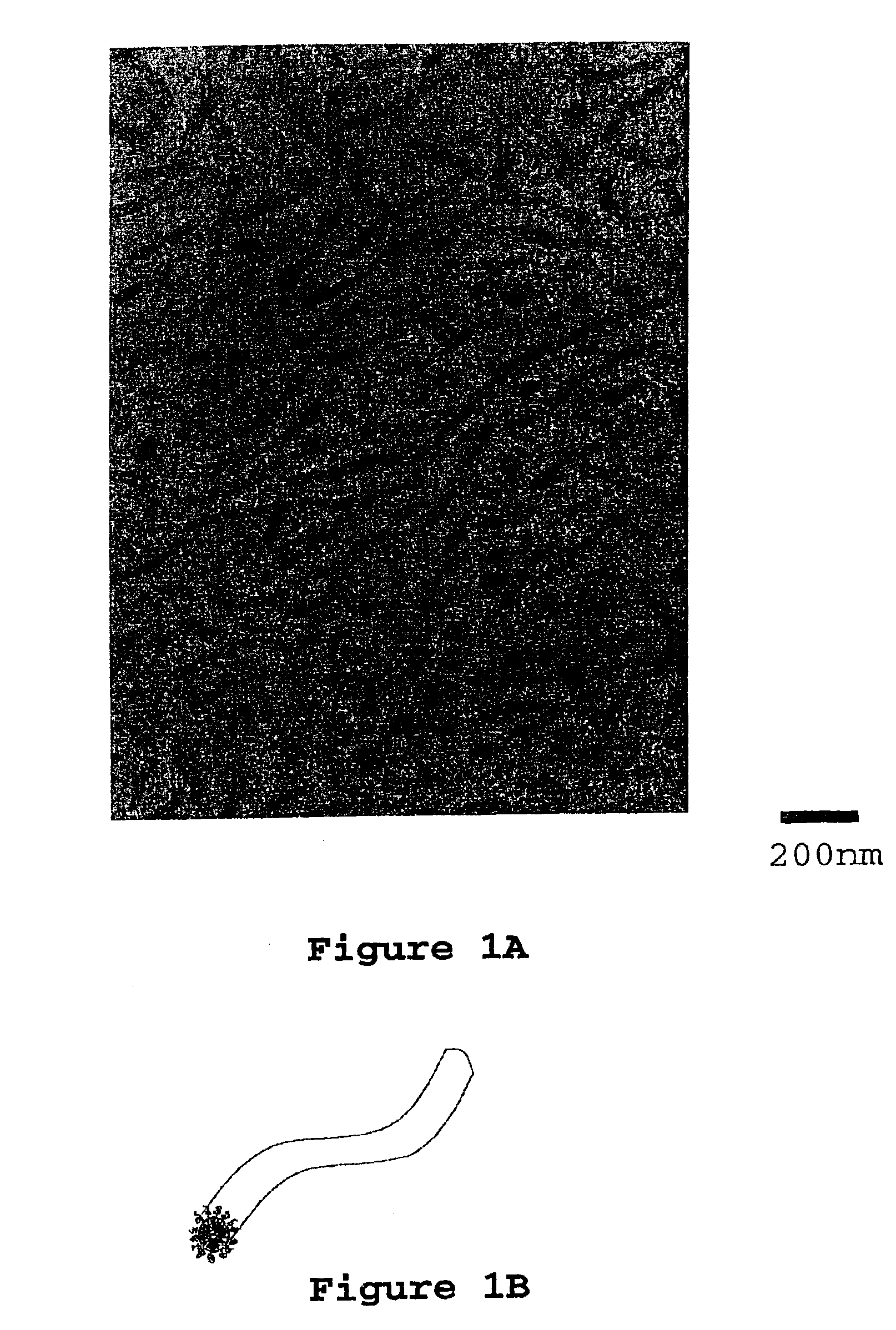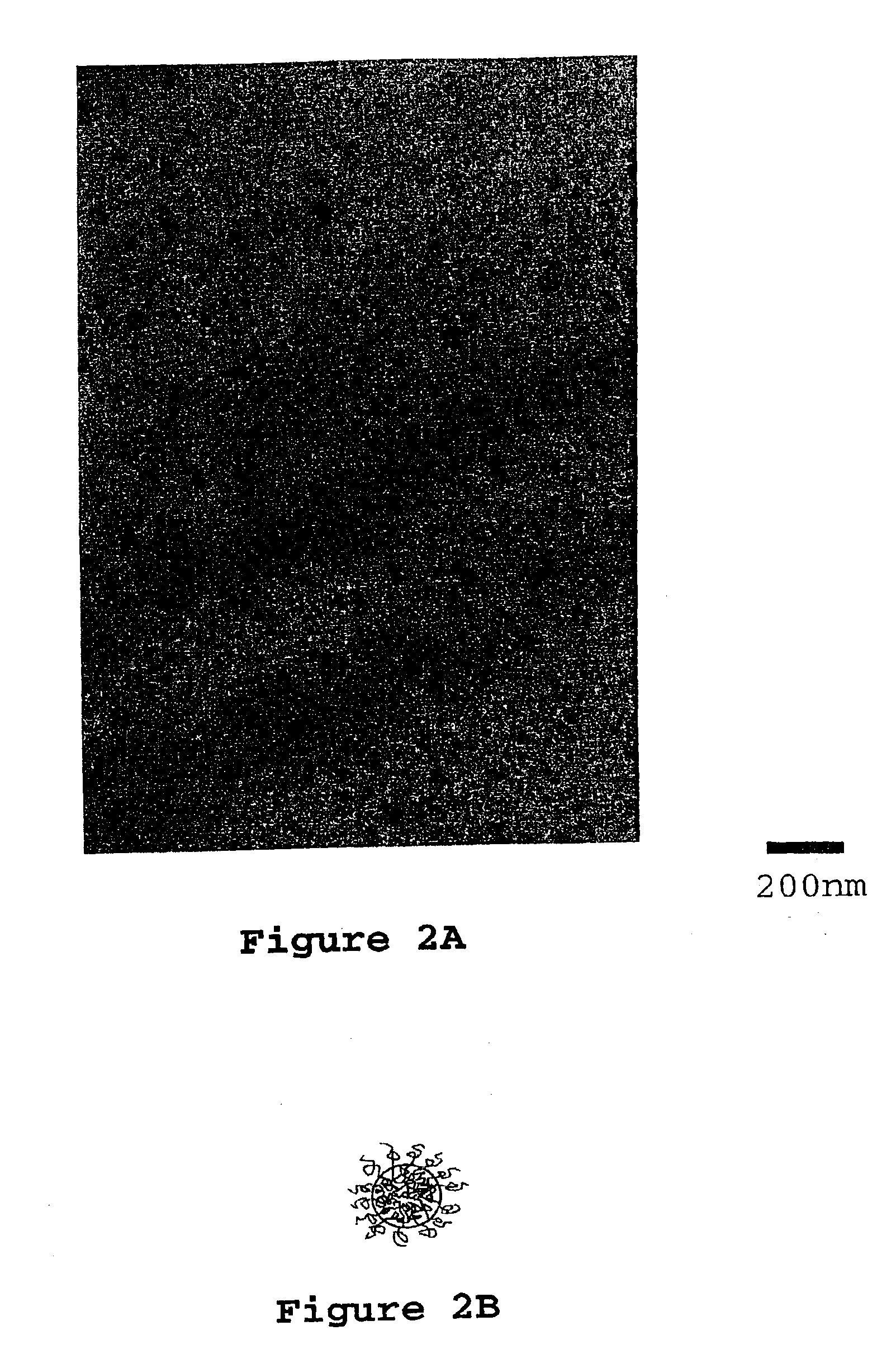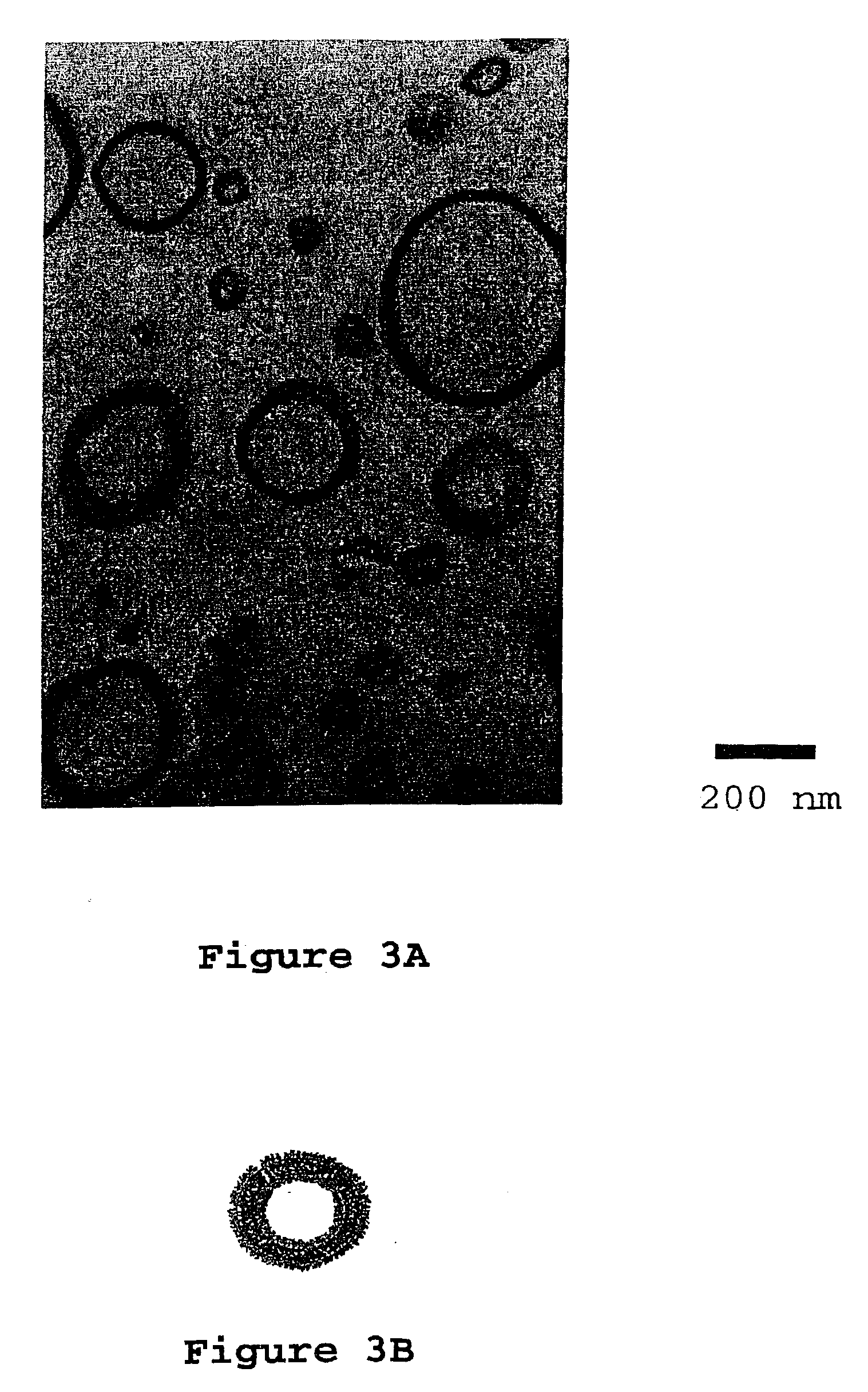Curable flame retardant epoxy compositions
a flame retardant epoxy and composition technology, applied in the field of cureable flame retardant epoxy resin compositions, can solve the problems of difficult processing of brominated epoxy composites used in printed circuit board fabrication, difficult to drill the holes of brominated epoxy composites, and reduce the fracture resistance of these materials, so as to increase the fracture resistance and flame retardance of epoxy resins, reduce the modulus, and increase the fracture resistance
- Summary
- Abstract
- Description
- Claims
- Application Information
AI Technical Summary
Benefits of technology
Problems solved by technology
Method used
Image
Examples
example 1
[0117]Two grams of PEO-PEP block copolymer (ƒPEO=0.25, Mn=8,000 g / mole, Mw / Mn=1.04) were added to 24.00 grams D.E.R. 383 in a round bottom flask. 23 mL of acetone was added to the flask and the contents were stirred until the block copolymer was completely dissolved (approximately two weeks). Then 14.00 grams of phenol novolac were added to the flask and the contents of the flask stirred until the phenol novolac dissolved. The flask was attached to a vacuum line using a 24 / 40 connector. The acetone solvent was slowly removed at room temperature until any resultant foaming subsided (thirty minutes). An oil bath was placed around the flask and a temperature was set to 50° C. The solvent was removed for 1 hour at 50° C. and then the temperature was increased to 75° C. (1 hour), and then to 100° C. (thirty minutes). The oil bath temperature was set to 150° C. and, after waiting for 10 minutes, the flask was disconnected from the vacuum line. The epoxy and block copolymer blend was poure...
example 2
[0119]Two grams of PEO-PEP block copolymer (∫PEO=0.25, Mn=8,000 g / mole, Mw / Mm=1.04) were added to 23 mL acetone and stirred until the polymer was dissolved (two days). 24.00 Grams D.E.R. 383 were added to the flask and the contents of the flask stirred until dissolved (one to two days). Then 14.00 grams of phenol novolac were added and stirred until dissolved. The flask was attached to a vacuum line using a 24 / 40 connector and the solvent was slowly removed at room temperature until any resultant foaming subsided (thirty minutes). An oil bath was placed around the flask and the temperature was set to 50° C. The solvent was removed for 1 hour at 50° C. and then the temperature was increased to 75° C. (1 hour), and then to 100° C. (thirty minutes). The oil bath temperature was set to 150° C. and, after waiting 10 minutes, the flask was disconnected from the vacuum line. The epoxy and block copolymer blend was poured into a 4 mm thick rectangular mold (preheated to 150° C.) coated with...
example 3
[0121]Two grams of PEO-PEP block copolymer ƒPEO=0.25, Mn=8,000 g / mole, Mw / Mn=1.04) were added to 19.05 grams D.E.R. 383 and 6.35 grams D.E.R. 560 in a round bottom flask. 23 mL acetone was added to the flask and the contents of the flask stirred until the block copolymer was completely dissolved (approximately two weeks). Then 12.6 grams of phenol novolac were added and stirred until dissolved. The flask was attached to a vacuum line using a 24 / 40 connector and the solvent was slowly removed at room temperature until the resultant foaming subsided (thirty minutes). An oil bath was placed around the flask and the temperature was set to 50° C. The solvent was removed for 1 hour at 50° C. and then the temperature was increased to 75° C. (1 hour), and then to 100° C. (thirty minutes). The oil bath temperature was set to 150° C. and, after waiting for 10 minutes, the flask was disconnected from the vacuum line. The epoxy and block copolymer blend was poured into 4 mm thick rectangular mo...
PUM
| Property | Measurement | Unit |
|---|---|---|
| weight percent | aaaaa | aaaaa |
| polydispersity | aaaaa | aaaaa |
| temperatures | aaaaa | aaaaa |
Abstract
Description
Claims
Application Information
 Login to View More
Login to View More - R&D
- Intellectual Property
- Life Sciences
- Materials
- Tech Scout
- Unparalleled Data Quality
- Higher Quality Content
- 60% Fewer Hallucinations
Browse by: Latest US Patents, China's latest patents, Technical Efficacy Thesaurus, Application Domain, Technology Topic, Popular Technical Reports.
© 2025 PatSnap. All rights reserved.Legal|Privacy policy|Modern Slavery Act Transparency Statement|Sitemap|About US| Contact US: help@patsnap.com



